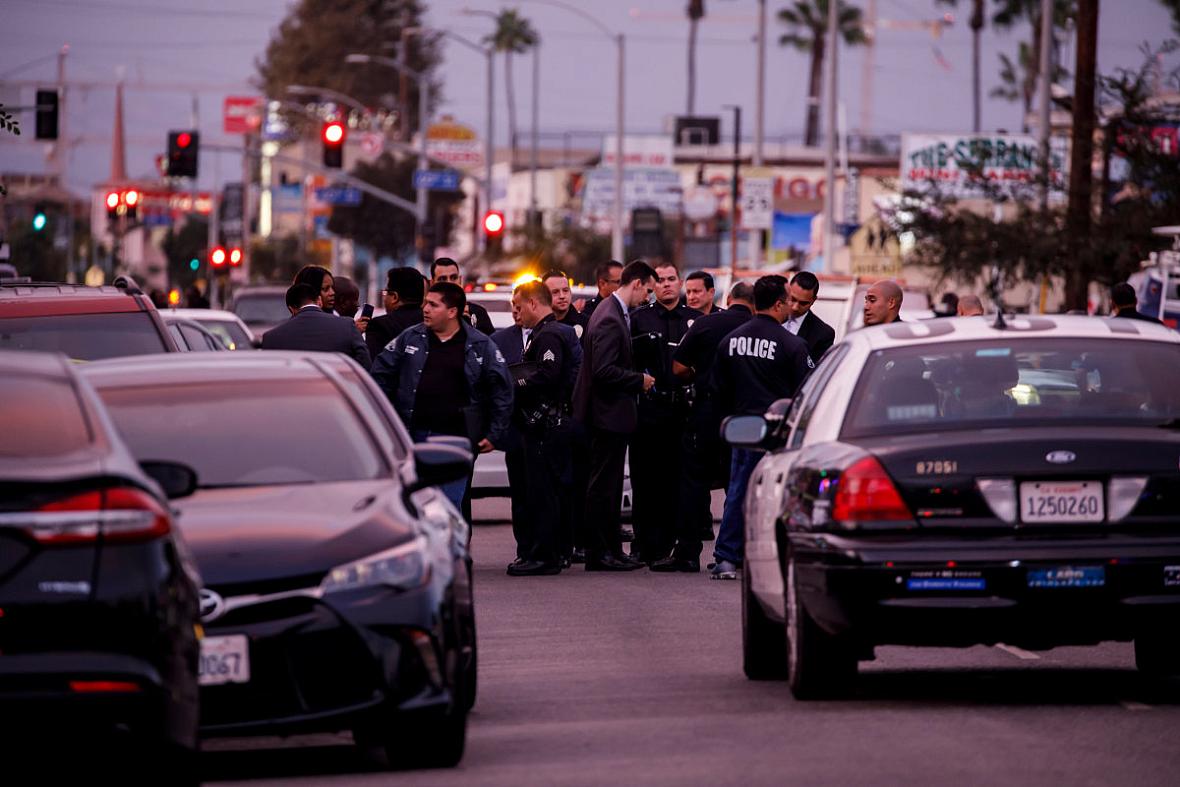Resources for students and families affected by violence near schools
Sonali Kohli worked on this project while participating in the USC Annenberg Center for Health Journalism's 2018 California Fellowship.
Other stories in this series include:
What it’s like to go to school when dozens have been killed nearby
How should journalists write about killings near schools? The students weigh in

Police respond to a crime scene near Hawkins High School.
(Photo Credit: Marcus Yam/Los Angeles Times)
Here is some information about violence near schools and what help is available for teens and their families.
Where is this happening?
Homicides in Los Angeles County have been steadily decreasing since 2000, when 1,073 people were killed. But there were still 634 homicides throughout the county last year. Killings near high schools are common — there was at least one homicide recorded within a mile of about 9 of 10 campuses in the county in the last five years.
Most of the highly impacted schools are clustered around the 110 Freeway in South L.A., framed by the 10 and the 105 freeways.
Why are there so many homicides near these schools?
Police attribute most killings in some of the deadliest areas to gang violence. But that gang violence stems from generations of poverty that forces parents to work long hours to maintain financial stability, leaves schools in poorer areas with fewer resources and causes children to be more susceptible to the external pressure to join gangs, mental health professionals said.
How does this affect children?
The most direct impact occurs when teens are victims. About 1 in 15 people killed in L.A. County from 2014 to 2018 were 18 or younger.
Going to school in areas surrounded by homicide can affect students’ mental health and ability to concentrate and learn. Students may have known the person who died, been a classmate or passed tributes filled with posters, flowers and candles.
What resources do schools have?
California still lags behind many other states in per-pupil funding. L.A. Unified receives extra state dollars for high-need students, and last year approved a plan to direct more money to schools based on neighborhood health outcomes and other criteria, though homicide frequency was not included in the formula.
About 400 psychiatric social workers are in LAUSD schools or working on district programs, serving close to a half-million students. That doesn’t include therapists and social workers from outside organizations who also work with students.
There are also wellness centers attached to, or next to, some of the schools with the highest number of homicides, which provide physical and mental health services. Here is a list of those clinics.
Some schools partner with outside organizations such as Our House and Cedars-Sinai’s Share & Care program to provide grief counseling on campus.
Students who have experienced trauma can also receive a Wellness Check UP (WCU), which is “a brief mental health screening offered to targeted students with parent consent” at schools and wellness clinics, said Pia Escudero, L.A. Unified’s executive director for student health and human services. A psychiatric social worker screens for potential symptoms of trauma, depression, anxiety and/or post-traumatic stress disorder.
L.A. Unified has a list of mental health resources and programs available for parents or students
What about preventative measures?
Some preventive programs address conflicts without resorting to punishment, where students discuss their feelings about a range of topics.
The idea of “restorative justice” is that they learn to understand and express emotions, before something bad happens — and build resilience and skills to cope with conflict or grief.
As of last year, the district employed 65 program advisors, who are funded for two years. Schools must then find money in their own budgets to continue the program.
What about outside of school?
A number of outside organizations provide resources to students and their families, including Crime Survivors, which offers resource guides, and Loved Ones Victims Services, which offers counseling for people who have lost someone, mostly to homicide. Many organizations offer low- or no-cost services.
The L.A. County Bureau of Victim Services also helps with “crisis intervention; emergency assistance; counseling referrals; court escort and orientation; restitution assistance; returning of property; assistance with employers; and case status notification.”
[This story was originally published by the Los Angeles Times.]


